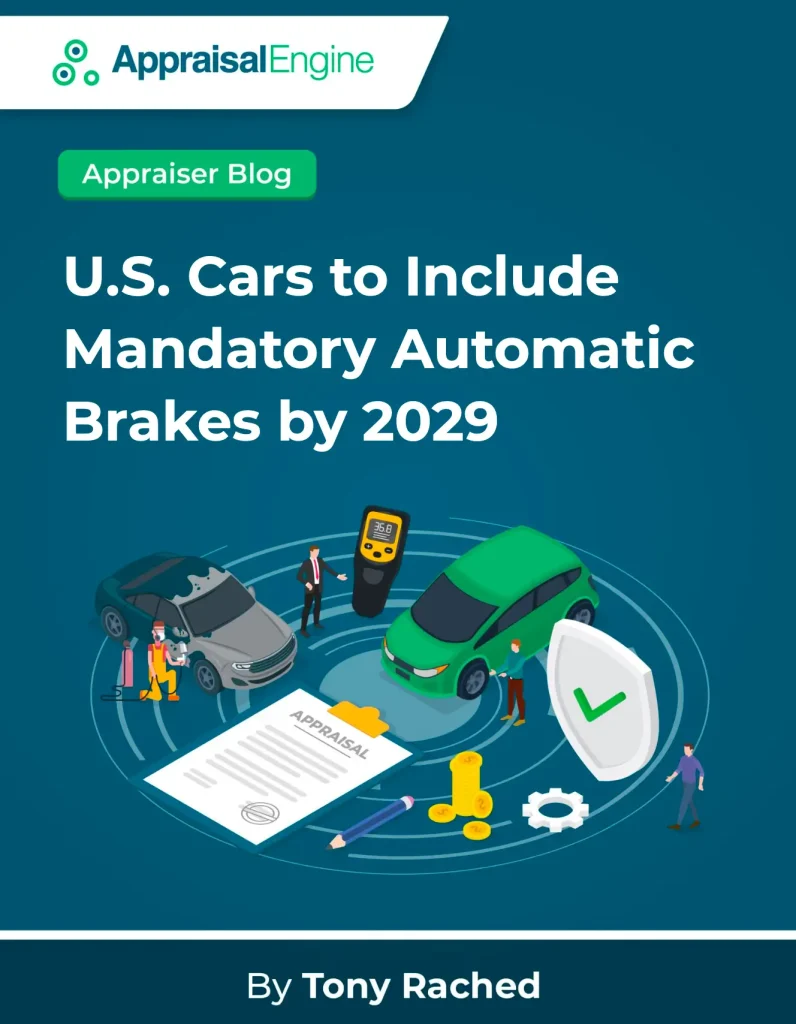Imagine a world where the moment of panic just before a potential car accident is increasingly a thing of the past. It’s the year 2029, and every new car rolling out of the showroom comes equipped with a guardian angel in the form of automatic emergency braking (AEB) system.
This isn’t just an optional luxury feature anymore but a mandatory safety standard aimed at significantly reducing traffic accidents and fatalities. The move, set forth by a new federal safety regulation, represents a bold step into a future where technology and safety converge to protect lives on the road.
U.S. Cars to Include Mandatory Automatic Brakes by 2029 (PDF)

Understanding the 2029 Automatic Braking Mandate
By 2029, all new vehicles in the U.S. will need to come equipped with sophisticated AEB systems capable of performing in both everyday and extreme driving conditions. These advanced systems will be required to operate effectively at speeds up to 62 miles per hour and manage partial braking up to 90 mph when a potential collision is detected. This requirement is particularly significant, considering it covers speeds well above the maximum limits found on U.S. roads, ensuring an extra layer of safety.
The implementation of this regulation is motivated by an alarming rise in road fatalities, which peaked at over 41,000 deaths in 2023 alone. The escalating numbers have driven the Department of Transportation, led by Secretary Pete Buttigieg, to advocate vigorously for this change, highlighting its potential to save hundreds of lives and avert tens of thousands of injuries every year. This proactive approach reflects a broader commitment to leveraging technology for enhancing road safety on a national scale.
The Technology Behind Automatic Brakes
The principle behind automatic emergency braking is straightforward yet sophisticated. Utilizing a combination of cameras, radar, and sometimes LIDAR, these systems continually scan the road ahead for objects, vehicles, and pedestrians. When a potential collision is detected, the system first alerts the driver. If no action is taken, the AEB system takes over, applying the brakes automatically to avoid or mitigate the collision.
Since their introduction in 2011, AEB systems have evolved rapidly. Initially seen as a premium feature, the technology has been embraced as a standard by nearly 90% of new vehicles sold today, thanks to a voluntary agreement by automakers in 2016. This widespread adoption prior to the mandate indicates a robust confidence in the technology’s reliability and effectiveness.
Challenges and Industry Response
Despite the positive outlook, the implementation of this mandate has not been without concerns. Some automakers argue that the new standards might push the boundaries of current technological capabilities. The industry’s main lobbying group, the Alliance for Automotive Innovation, has expressed reservations about the feasibility of meeting these high expectations at all speeds, labeling them as neither practicable nor reasonable.
Moreover, there is an ongoing debate about the extent to which control should be taken away from the driver, especially at high speeds. The cost implications are also not negligible, although the Biden administration estimates an average increase of only $23 per vehicle, suggesting that the benefits far outweigh the costs.
Conclusion: Steering Toward a Safer Future
As the 2029 mandate approaches, the landscape of U.S. road travel is set to undergo a significant transformation. The widespread implementation of automatic braking systems promises not just an enhancement of vehicle safety features but a fundamental shift in how safety is integrated into everyday driving.
This progression towards a more technologically advanced and proactive approach in vehicles is expected to dramatically reduce accident rates and save lives. With every new car that incorporates these systems, we take another stride towards a future where technology and safety go hand in hand.
Do you think these technological advancements will change the way we drive?





